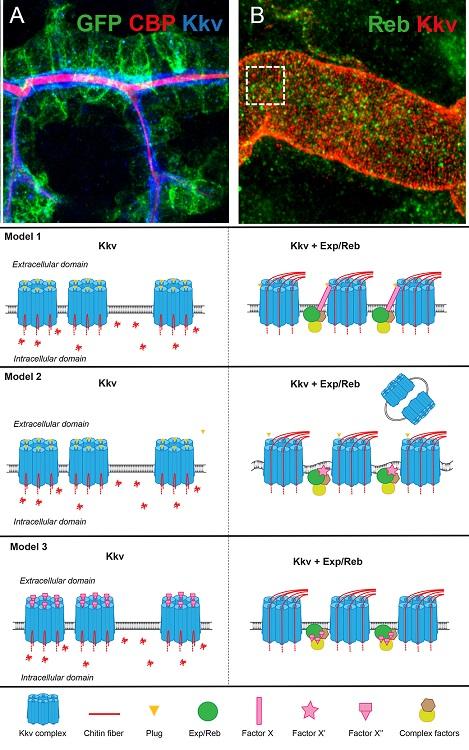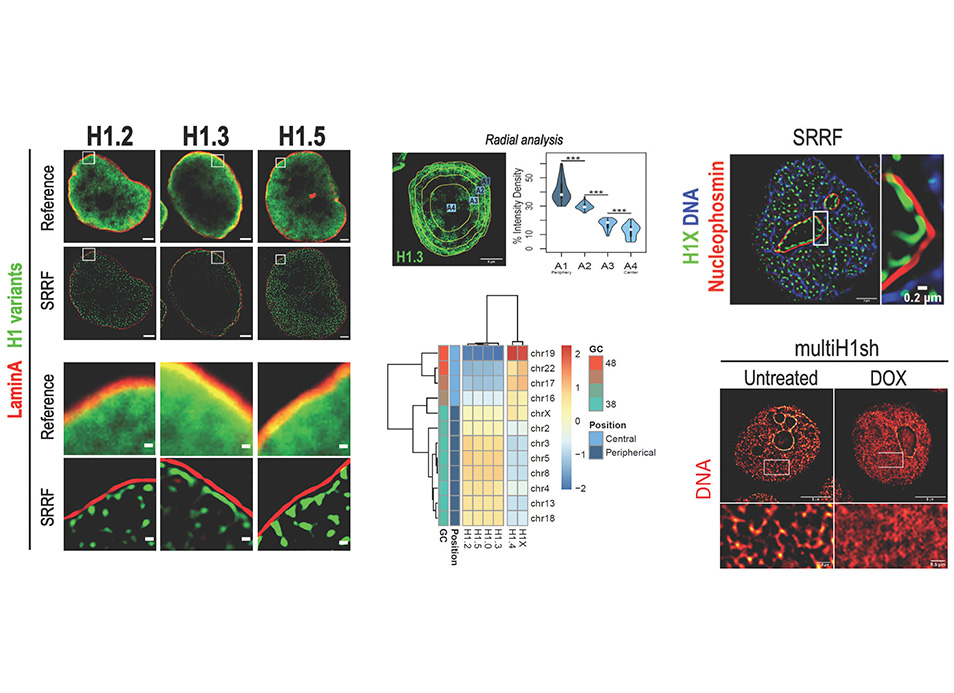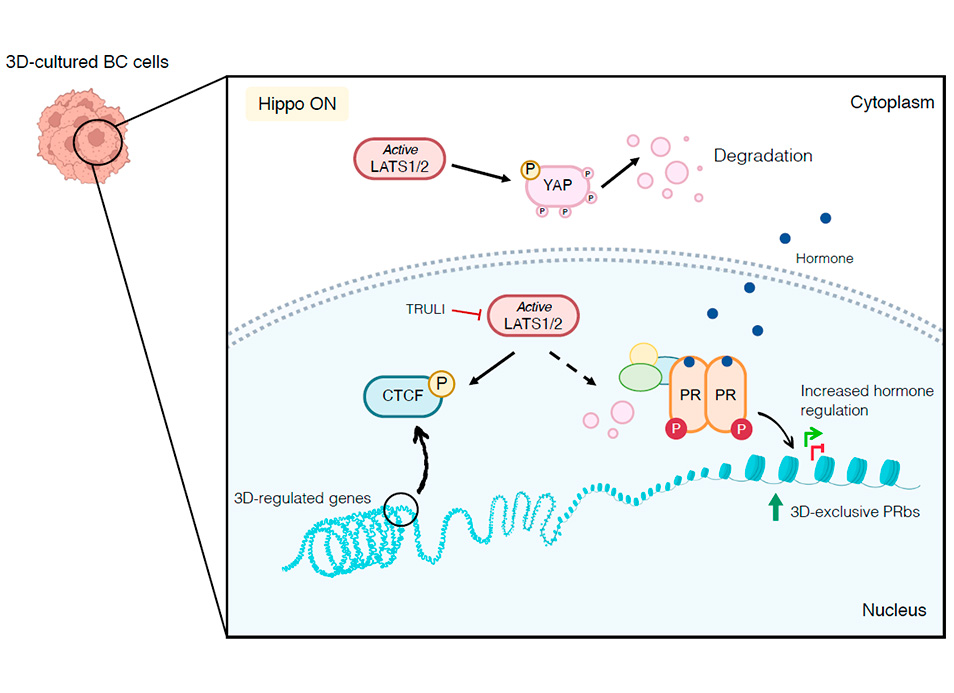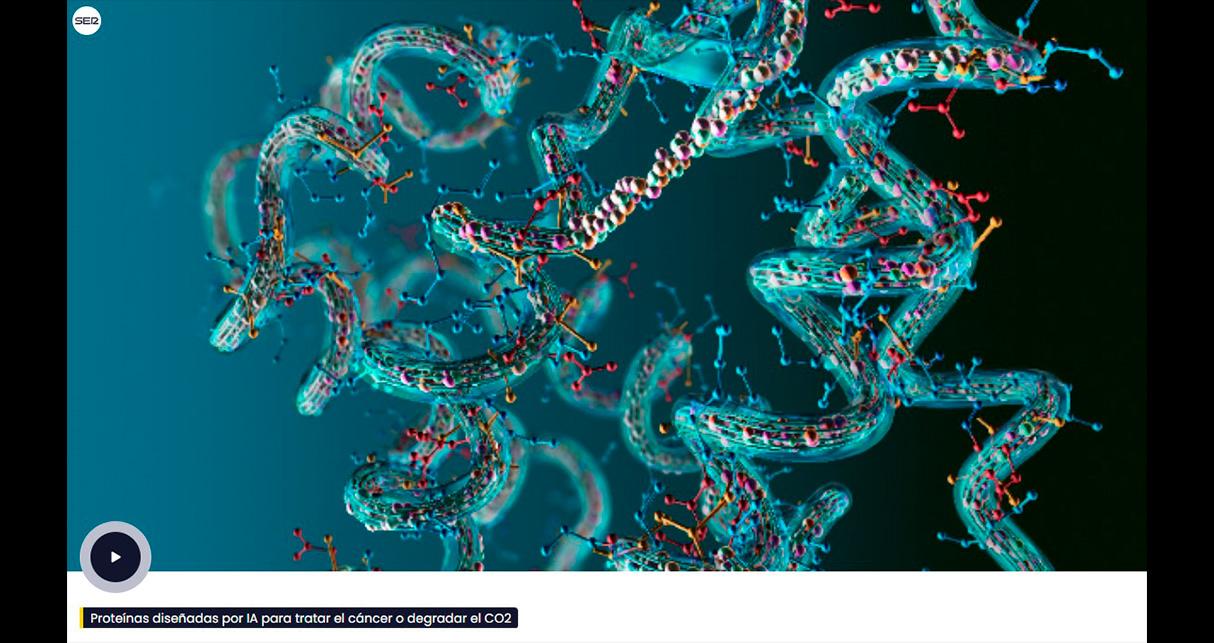New publication in eLife of the Jordan Lab in collaboration with the IBMB Imaging Platform showing that…
A dynamic interplay between chitin synthase and the proteins Expansion/Rebuf reveals that chitin polymerisation and translocation are uncoupled in Drosophila
In this work we are advancing in our current understanding of the cellular and molecular mechanisms regulating chitin deposition. Chitin is a highly abundant polysaccharide in nature and a principal component of apical extracellular matrices in insects. Besides its physiological relevance, it is an excellent biomaterial with multiple applications nowadays, as well as a primary target for anti-fungal agents and pesticides. Understanding the mechanisms of chitin deposition is therefore a key goal both in biology and biotechnology.
Abstract
Chitin is a highly abundant polymer in nature and a principal component of apical extracellular matrices in insects. In addition, chitin has proved to be an excellent biomaterial with multiple applications. In spite of its importance, the molecular mechanisms of chitin biosynthesis and chitin structural diversity are not fully elucidated yet. To investigate these issues, we use Drosophila as a model. We previously showed that chitin deposition in ectodermal tissues requires the concomitant activities of the chitin synthase enzyme Kkv and the functionally interchangeable proteins Exp and Reb. Exp/Reb are conserved proteins but their mechanism of activity during chitin deposition has not been elucidated yet. Here we carry out a cellular and molecular analysis of chitin deposition and we show that chitin polymerisation and chitin translocation to the extracellular space are uncoupled. We find that Kkv activity in chitin translocation, but not in polymerisation, requires the activity of Exp/Reb, and in particular of its conserved Na-MH2 domain. The activity of Kkv in chitin polymerisation and translocation correlate with Kkv subcellular localisation, and in absence of Kkv-mediated extracellular chitin deposition, chitin accumulates intracellularly as membrane-less punctae. Unexpectedly, we find that although Kkv and Exp/Reb display largely complementary patterns at the apical domain, Exp/Reb activity nonetheless regulates the topological distribution of Kkv at the apical membrane. We propose a model in which Exp/Reb regulate the organisation of Kkv complexes at the apical membrane which, in turn, regulates the function of Kkv in extracellular chitin translocation.
Reference:
De Giorgio E, Giannios P, Espinàs ML, Llimargas M. (2023). A dynamic interplay between chitin synthase and the proteins Expansion/Rebuf reveals that chitin polymerisation and translocation are uncoupled in Drosophila. PLoS Biol. 2023 Jan 23;21(1):e3001978. doi: 10.1371/journal.pbio.3001978. eCollection 2023 Jan. PMID: 36689563




